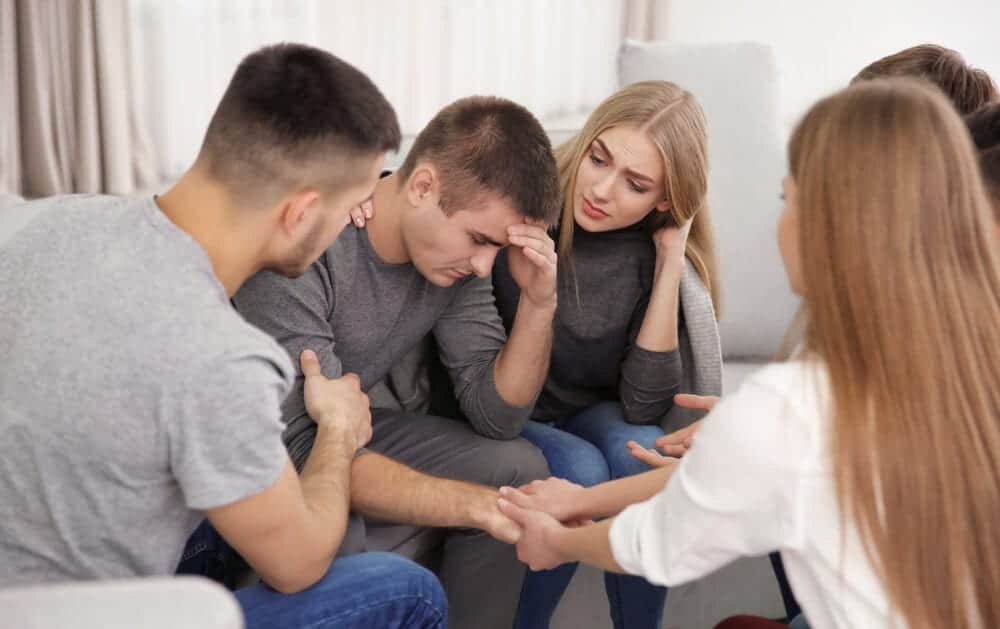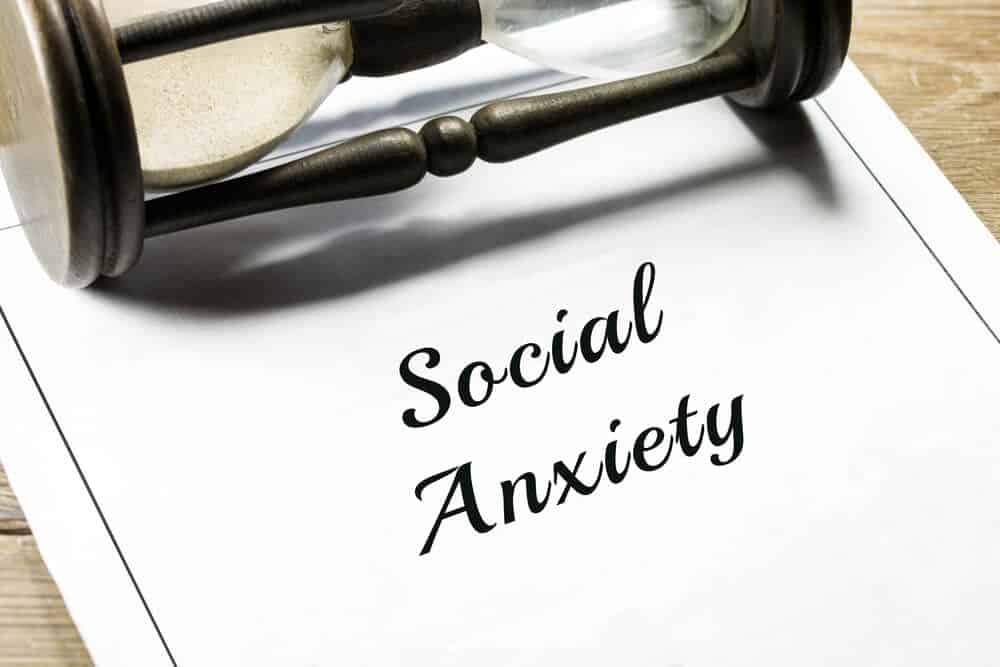5 Unexpected Signs of Social Anxiety
If you grew up shy, then you’re probably familiar with the more obvious symptoms of social anxiety: blushing, clammy palms, refusal to speak to strangers. But what happens when normal childhood shyness becomes a full-blown psychological disorder?
Social anxiety disorder, otherwise known as ‘social phobia’ or ‘social anxiety,’ develops when a person’s fear of facing social situations becomes so pervasive that it disrupts their everyday life. You might assume it would be obvious if a person is suffering from social anxiety disorder, but some of the signs and symptoms can be more subtle than you think.
These five unexpected signs of social anxiety might surprise you, but could suggest that you or someone you love is suffering from this debilitating disorder. Read on to discover what it means to have social anxiety for real — not as told by magazines or movies!
What is social anxiety?
Are you afraid of being judged by others, so much so that it limits your daily life? Social anxiety disorder affects 15 million American adults — most of whom are women. This disorder leads to significant worry and distress when a person is in social situations, including but not limited to:
- Talking to strangers or speaking in public
- Eating in front of other people
- Being the center of attention
- Getting called on in class
- Interviewing for a new job
- Making phone calls in public
- Using a public restroom
According to the DSM-V (the handbook therapists use to make diagnoses of clinical disorders), patients with social anxiety must show marked fear or anxiety in one or more of these social situations. This fear must happen consistently, every time, and out of proportion to the actual threat posed by the social situation and sociocultural context. When this fear, anxiety or avoidance is present for at least six months, a person may qualify for a diagnosis of social anxiety disorder.
What causes social anxiety?
People may present with social anxiety for a variety of reasons — and because of this, it’s difficult to put a finger on exactly one reason why a person develops this disorder. Still, there are a number of commonly recognized causes of social anxiety, both environmental and biological. When environmental and biological causes combine to produce a general vulnerability to mental illness, some people will develop social anxiety disorder. This combination of factors is known as the psychopathology behind a mental illness, like social anxiety.
Causes of social anxiety include, but are not limited to:
- Genetics. Children of a parent with social anxiety are anywhere from 30 to 40% more likely to develop the disorder themselves.
- Brain chemistry. Brain scans of people with social anxiety demonstrate that society anxiety disorder may lead to increased activity in the amygdala, a region of the brain responsible for our body’s ‘fight-or-flight’ response.
- Childhood experiences. Children of parents who are overly strict or controlling may suffer from social anxiety later in life as a product of the uncertainty that naturally arises from these life experiences.
- Trauma and stress. Stressful or traumatic memories, such as abuse, sexual assault, bullying, death or even maternal stress during pregnancy or infancy, all impact a person’s response to stress later in life. For some, this stress response may result in social anxiety.
Unexpected signs of social anxiety
However, these commonly-recognized signs of social anxiety are not the only ways this disorder can affect a person’s life. Some symptoms may be less obvious — including the five we talk about below. These five unexpected symptoms of social anxiety might not seem like signs of a psychological disorder at first, but upon closer examination, they reveal a pattern of thought and behavior characteristic with social anxiety disorder.
Sign #1: You cancel plans. Like, all the time.
We all have days where we just want to stay in bed watching Netflix, instead of going out and socializing with our friends. But when social avoidance becomes frequent rather than occasional, it may signify social anxiety disorder.
Cancelling plans now and then is normal and valid, yet someone with social anxiety may make constant excuses not to come out to events outside the home. You might think they’re just introverted or shy, but if their presence at social events is becoming a rarity, you may want to check in with them to ensure they’re not avoiding social situations out of fear or anxiety.
Sign #2: You obsess over things you said years ago.
Do you ever think back on something you said hours ago and cringe, wondering if you could have phrased it differently? We all do this from time to time, but if you’re still thinking about that silly thing you said five years ago and wishing you could take it back, it might be a sign that you’re ruminating — a hallmark symptom of social anxiety disorder.
Rumination, or put simply, overthinking, frequently occurs in people with social anxiety, especially after attending a social event. Someone suffering from social anxiety may replay social scenarios in their head for hours and hours upon end, wondering what they might have done differently or said instead of what they actually did say. The problem with rumination is that it has been found to perpetuate negative beliefs in people with social anxiety, hindering progress in a person’s recovery from the disorder.
Sign #3: You overthink everything you post online.
Social media, in many ways, encourages us to perpetuate a myth of perfection. So, we Facetune every photo, think up a captivating caption and continue to carefully curate a feed that shows the world not who we are, but what we want to portray ourselves as.
This is all well and good — but when that obsession with perfection turns into hours of editing, typing and re-typing on our phones, it could be a sign of social anxiety disorder. Social anxiety encourages us to obsess over how the world sees us, and social media offers us a false sense of control over our public image that can quickly become addictive to a person with social anxiety.
Sign #4: You ask yourself “What if …?”
And speaking of overthinking, many of the questions we ask ourselves when we’re feeling uncertain begin with that common phrase, ‘What if …?’ For a person with social anxiety, those questions may be something like ‘What if I trip and fall on my way into the elevator?’ or ‘What if everybody laughs at me?’
If you find yourself having these thoughts often, you may be falling into the rumination trap yet again, signifying you could be suffering from social anxiety disorder. The problem, however, with questions like these is that there is no way to predict the future, meaning these questions are inherently impossible to answer.
Sign #5: You were painfully shy as a child.
Now, we come full circle, back to our introduction: if you were painfully shy as a child, you understand the symptoms of social anxiety. But could your childhood shyness have signified social anxiety disorder to come?
Anxiety can manifest itself early in childhood — often earlier than we expect. Childhood social anxiety disorder most often presents in adolescents, but may appear as early as eight years old. (The median age of onset is 13.) Still, the symptoms may be slightly different in children than adults, which can masquerade social anxiety disorder during childhood. For example, children with social anxiety may throw temper tantrums, refuse to leave their parents’ side or even express irritability or frustration in place of anxious, fearful behavior.
What to do if you think you have social anxiety
If you recognize any of the above scenarios in you or someone you love, you may be well acquainted with social anxiety disorder. The question is, once you identify social anxiety, what can you do about it?
Social anxiety disorder can be debilitating for those who suffer from it, but you can control it with anxiety treatment from a qualified medical professional, such as a doctor or licensed therapist. You do not have to allow social anxiety to control you or the lives of people you love.
That being said, here’s how to stop social anxiety from exerting itself in YOUR life, once and for all:
Treatments for social anxiety disorder
Seeing a professional — a doctor, therapist or counselor — is the first step toward receiving treatment for social anxiety disorder.
Once a medical professional gives you or your loved one a formal diagnosis of social anxiety, they will likely send you down one of three primary treatment paths – two of which are accessible at a residential treatment facility like the Meadowglade. While these are not the only ways to treat social anxiety disorder, they are the most successful (and scientifically proven) treatments for the condition.
Here are three treatments for social anxiety that really work:

Cognitive Behavioral Therapy (CBT)
Cognitive behavioral therapy (CBT) is a form of therapy practiced by many mental health professionals, used primarily for treating depression and anxiety disorders, based on the premise that our thoughts influence our behavior, and our behavior influences our emotions. Thus, CBT aims to combat negative thoughts — and therefore toxic behaviors — to help us feel better emotionally.
Negative thoughts challenged in CBT for social anxiety may include misperceptions about your self-worth (i.e. ‘Nobody likes me because I’m boring!’), guilt or embarrassment over past situations (i.e. ‘I made a fool of myself once; I’ll just do it again’) and challenging unrealistic and perfectionistic expectations (i.e. ‘If my speech isn’t perfect, everyone will make fun of me’).
Exposure and Response Therapy (ERT)
Exposure and response therapy (ERT), first developed for obsessive-compulsive disorder, is a branch of CBT that exposes patients to their fears and works on managing their responses to them. ERT works for social anxiety disorder because it prevents patients from avoiding situations that may trigger their anxiety, forcing them to sit with those uncomfortable emotions and develop a healthier response to them.
In the early stages of ERT, the patient will work alongside a therapist to tolerate uncomfortable social situations for small periods of time. The patient and therapist will then work up a ‘fear ladder,’ tolerating scarier and scarier situations for longer and longer periods of time. If the process of ERT is kept up over time, it can have curative results for patients with social anxiety disorder.
Selective Serotonin Reuptake Inhibitors (SSRIs)
When therapy alone fails to treat social anxiety disorder, some patients may want to try medication as a supplemental treatment — and that’s perfectly okay! However, it’s important to note that medication for mental illness works best in combination with therapy. The main type of medication prescribed to patients with social anxiety is a Selective Serotonin Reuptake Inhibitor, or SSRI. These medications prevent brain receptors from reusing serotonin, making more of this happy chemical available in the brain to lower anxiety and boost mood. Three SSRI brands — Paxil, Zoloft and Luvox — have been FDA-approved for the treatment of social anxiety disorder.
Talk to your therapist or doctor if you are considering medication for advice on which brand may be right for you…. While therapists who are not psychiatrists cannot prescribe medication, they are generally knowledgeable about common treatments for psychological disorders and may partner with a particular doctor or psychiatrist in the community, to whom they can provide you with a referral.
Are you suffering from social anxiety? Is your life impacted by this intense form of an anxiety disorder? If so, you should know that you’re not alone and you don’t have to struggle alone. If your life and livelihood are affected by social anxiety, you can reach out to The Meadowglade in order to learn more about how we can help you!

